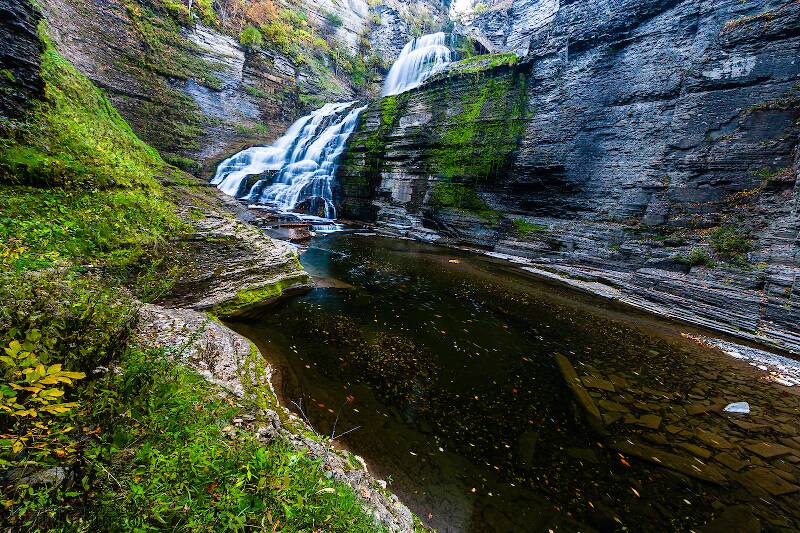
Blue-winged Olives
Baetis
Tiny Baetis mayflies are perhaps the most commonly encountered and imitated by anglers on all American trout streams due to their great abundance, widespread distribution, and trout-friendly emergence habits.


Stonefly Species Skwala curvata (Large Springflies)
Where & when
Specimens noted in the original species description were all collected in April.Species Range
Identification
According to Records And Descriptions of North American Plecoptera. Part Ii. Notes On North American Perlodidae:This species may be distinguished easily from Skwala americana in the male sex by the long recurved dorsal lobes, the larger lateral stylets (seen only when supraanal process is extruded), and the longer supraanal process. The subgenital plate of the female is indistinguishable from that of Skwala americana, but this sex can be distinguished by color pattern difference as indicated above. It is easily conceivable, however, that further collecting in various regions will show intergradations of color pattern characters between these two species.
Physical description
Most physical descriptions on Troutnut are direct or slightly edited quotes from the original scientific sources describing or updating the species, although there may be errors in copying them to this website. Such descriptions aren't always definitive, because species often turn out to be more variable than the original describers observed. In some cases, only a single specimen was described! However, they are useful starting points.
Male Adult
Wing length: 11–12 mm
Head color pattern similar to that of Skwala americana but with the yellow crown patch often larger in extent and the tentorial rugosities not yellow. Also in this species the dark brown color extends behind the compound eyes.
Length to tip of wings 15–17 mm. Ninth segment of abdomen very slightly emarginate above and without spinulae. Tenth segment widely split above; dorsal lobes long, recurved, and bearing many spinulae. Supraanal process elongate, cylindrical, well sclerotized, membranous and finely setiferous at tip. Lateral stylets flat, straight or slightly curved near apex, and tapering to a sharp point; conspicuous when the supraanal process is extruded but not visible when that process is retracted within its membranous sheath. The membranous region between the lateral stylets and the base of the supraanal process is thickly beset with a mat of very fine hairs.
Female Adult
Wing length: 14–17 mm
Head color pattern similar to that of Skwala americana but with the yellow crown patch often larger in extent and the tentorial rugosities not yellow. Also in this species the dark brown color extends behind the compound eyes.
Length to tip of wings 18–22 mm. Subgenital plate very similar to that of A. americana, but probably on the average slightly more protrusile and slightly more emarginate than in A. americana.
Specimens of the Stonefly Species Skwala curvata
1 Female Adult

Start a Discussion of Skwala curvata
References
- Baumann, Richard W. 1975. Revision of the Stonefly Family Nemouridae (plecoptera) : a Study Of The World Fauna At The Generic Level. Smithsonian Contributions to Zoology undef(211): 1-74.
- Hanson, John F. 1942. Records And Descriptions of North American Plecoptera. Part Ii. Notes On North American Perlodidae. American Midland Naturalist 28(2): 389-undef.
Stonefly Species Skwala curvata (Large Springflies)
Species Range
Common Names
Resources
- NatureServe
- Integrated Taxonomic Information System
- Global Biodiversity Information Facility
- Described by Hanson, J.F. (1942) Records and descriptions of North American Plecoptera. Part II. Notes on North American Perlodidae. The American Midland Naturalist 28, 389–407.

